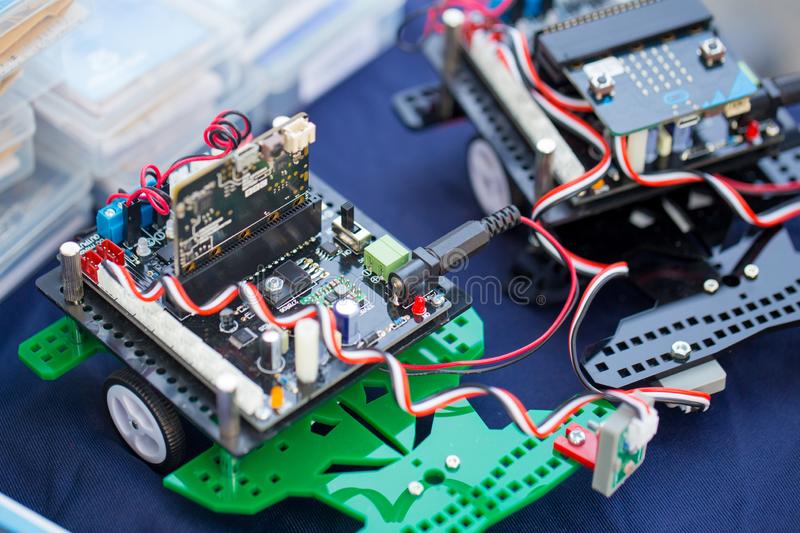The Benefits of Embedded systems
 Goke Akingbade
Goke Akingbade
Hello there, welcome to another time of learning new things in technology. My name is Goke( Tech Guide), and I will be your host on this journey. Today, we want to consider what is known as an embedded system.
What is an embedded system?
It involves the combination of hardware and software in designing a dedicated computer system that can perform specific tasks in electronic, and mechanical devices.
Embedded systems always function as part of a complete device – that is what is meant by the term embedded. They are low-cost, low-power-consuming, small computers that are embedded in other mechanical or electrical systems. Generally, they consist of a processor, power supply, and memory and communication ports.
Gondane(2014) stated that embedded systems are used in a variety of applications, namely: electronic products, automobiles, medical equipment, household appliances, aerospace and communications, industrial appliances etc. Embedded systems may also function within a larger system. The systems can be programmable or have a fixed functionality. Industrial machines, consumer electronics, agricultural and processing industry devices, automobiles, medical equipment, cameras, digital watches, household appliances, airplanes, vending machines and toys, as well as mobile devices, are possible locations for an embedded system.
How does an embedded system work?
Embedded systems are known to function as part of a complete device -- that's what's meant by the term embedded. They are low-cost, low-power-consuming, small computers that are embedded in other mechanical or electrical systems. Generally, they comprise a processor, power supply, and memory and communication ports. Embedded systems use communication ports to transmit data between the processor and peripheral devices -- often, other embedded systems -- using a communication protocol. The processor interprets this data with the help of minimal software stored in the memory. The software is usually highly specific to the function that the embedded system serves.
Examples of embedded systems
Embedded systems are used in a wide range of technologies across a wide variety of industries. Some examples include:
Automobiles. Modern cars commonly consist of many computers (sometimes as many as 100), or embedded systems, designed to perform different tasks within the vehicle. Some of these systems perform basic utility functions and others provide entertainment or user-facing functions. Some embedded systems in consumer vehicles include cruise control, backup sensors, suspension control, navigation systems and airbag systems.
Mobile phones. These consist of many embedded systems, including GUI software and hardware, operating systems (OSes), cameras, microphones, and USB (Universal Serial Bus) I/O (input/output) modules.
Industrial machines. They can contain embedded systems, like sensors, and can be embedded systems themselves. Industrial machines often have embedded automation systems that perform specific monitoring and control functions.
Medical equipment. These may contain embedded systems like sensors and control mechanisms. Medical equipment, such as industrial machines, also must be very user-friendly so that human health isn't jeopardized by preventable machine mistakes. This means they will often include a more complex OS and GUI designed for an appropriate UI.
Advantages of Embedded systems.
1. They are easy to manage: Embedded systems meant for general use are easy to manage. The materials used in producing these devices are cheap and durable.
2. They are smaller in size: In comparison to traditional computers, embedded systems are smaller, so they are portable and occupy little space. They require less power because of their small size as compared to traditional computers. Also, the size enables them to load faster as the system has fewer elements to manage.
3. Hardware benefits and cost optimization: The embedded system hardware rarely requires any changes like additional storage and memory making it ideal for any device, irrespective of the size.
4. Faster performance: the performance of an embedded system depends on some factors. Developers must fulfill non-functional requirements like execution time, energy consumption, and memory capacity to optimize a system’s performance. Embedded systems with a single task to complete are fast and reliable.
5. It is applicable in mobile robots and military operations: However, developers can build small mobile robots with several sensors controlled using small light-embedded computer systems. Embedded systems can also be used in military applications like advanced vehicle computers.
While embedded systems are computing systems, they can range from having no user interface (UI) -- for example, on devices designed to perform a single task -- to complex graphical user interfaces (GUIs), such as in mobile devices. User interfaces can include buttons, LEDs (light-emitting diodes) and touchscreen sensing. Some systems use remote user interfaces as well.
Markets and Markets, a business-to-business (B2B) research firm, predicted that the embedded market will be worth $116.2 billion by 2025. Chip manufacturers for embedded systems include many well-known technology companies, such as Apple, IBM, Intel and Texas Instruments. The expected growth is partially due to the continued investment in artificial intelligence (AI), mobile computing and the need for chips designed for high-level processing.
This is where we will be stopping for now, so till I come your way again, Stay safe.
Subscribe to my newsletter
Read articles from Goke Akingbade directly inside your inbox. Subscribe to the newsletter, and don't miss out.
Written by

Goke Akingbade
Goke Akingbade
I am a Safety professional who is aspiring to switch into the tech space. I am a Linux enthusiast, I have interest in cyber security, data analytics and cloud technologies.